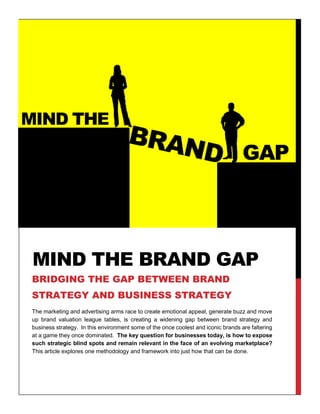The document discusses the widening gap between brand strategy and business strategy, emphasizing that iconic brands are struggling to remain relevant in a rapidly evolving marketplace. It highlights the necessity for businesses to adopt a structured approach to integrate brand management into their overall business strategy, using a framework called the order® model. Effective brand management requires continuous adaptation to customer needs and market changes to ensure competitiveness and sustained demand.






